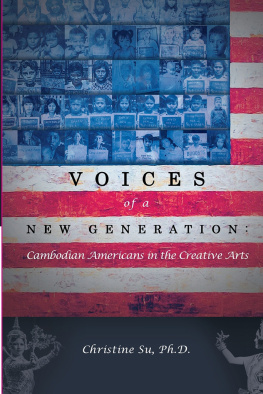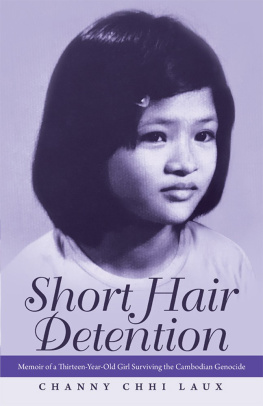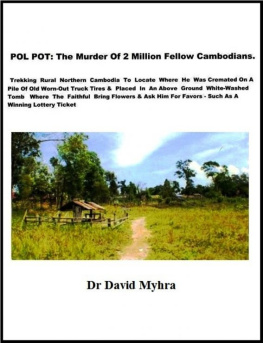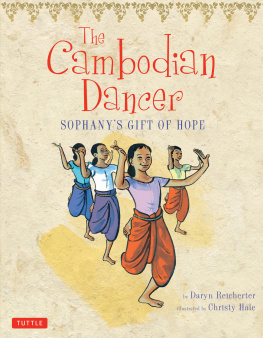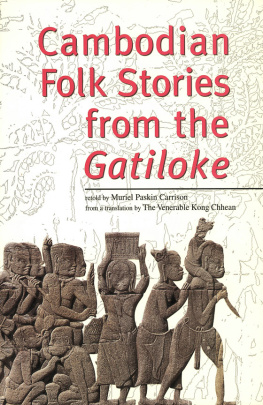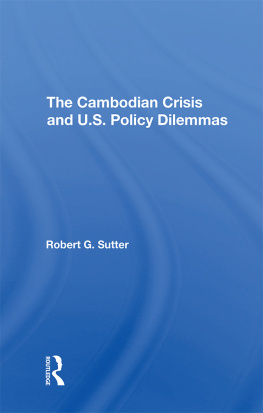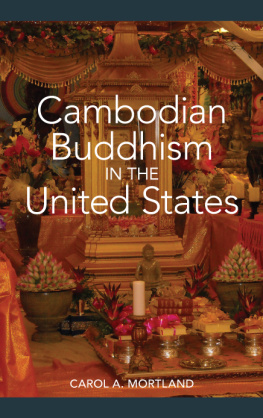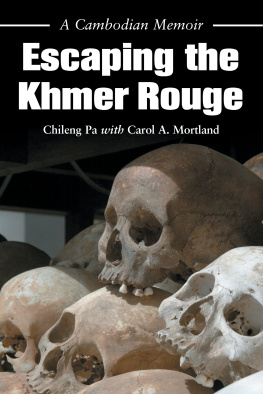LOST CRUSADE



The latest edition of this work has been brought to publication with the generous assistance of Marguerite and Gerry Lenfest.
Naval Institute Press
291 Wood Road
Annapolis, MD 21402
1998 by Peter Scott
All rights reserved. No part of this book may be reproduced or utilized in any form or by any means, electronic or mechanical, including photocopying and recording, or by any information storage and retrieval system, without permission in writing from the publisher.
First Naval Institute Press paperback edition published 2013
ISBN 978-1-61251-177-1 (eBook)
The Library of Congress has cataloged the hardcover edition as follows:
Scott, Peter, 1945
Lost Crusade : Americas Secret Cambodian mercenaries / Peter Scott.
p. cm. (Naval Institute Special Warfare special warfare series)
1. Vietnamese Conflict, 1961-1975Personal narratives, American. 2. Counterinsurgency Cambodia. 3. Vietnamese Conflict 1961-1975Underground movements. 4. Cambodia History1953-1975. 5 Scott,
Peter, 1945- . I. Title. II. Series.
D5559.5.539 1998
959.70438dc21
98-20797

 Print editions meet the requirements of ANSI/NISO z39.48-1992 (Permanence of Paper).
Print editions meet the requirements of ANSI/NISO z39.48-1992 (Permanence of Paper).
9 8 7 6 5 4 3 2 1
Maps by John Tottenham
Contents
To my childrenJacob, Sarah, and Michaeland to the children of my Khmer Krom friends, who we hope will never know war

The story of the Khmer Krom and their American friends told here is drawn almost entirely from the memories of the survivors I could find. It is not a definitive history, but a story told by the participants and arranged by me.
I am especially grateful to those who sat for many long, often laborious interviews: Chau Reap, Thach Quyen, Sem Ly, Ha Son, Rinh Kien, Sa Abdul Aziz, Thach Tan, Thach Prum Sira, Thach Thuong, Michael Healy, Frank Brown, John Strait, Richard Sirois, H. H. McGuffin, Greg Horan, Larry Caber, Richard Vela, Lloyd Thyen, Peter Krawtzow, and the unnamed sergeant.
Tim OBrien encouraged me to tell this story and helped with the final draft. Anthony Schneider, Dale Andrade, and Mark Gatlin also helped guide me through various stages of the manuscript.
For their assistance and support I would also like to thank Dr. Thach Bunroeun, Robert Topp, Art Kong, Le Nguyen Binh, Herbert Martin, Richard Steppe, Steve Sherman, Bill Laurie, Mark Moyar, William Tucker, John Tottenham, Nick Garbarino, the Counterparts Association, the National Archives, the Special Forces Association, and the United States Department of States Office of Freedom of Information.
Hawken School gave me time and financial support for work and travel, which proved invaluable.
Above all I am grateful to Holly Scott, my wife and best friend, who advised and encouraged me every step of the way.
LOST CRUSADE


Coto Mountain, Vietnam

Seven Mountains Region, Vietnam

The organization, clandestine or otherwise, is the arena in which the struggle for power takes place.... No organization is ever completely disguised. All consist of at least two parts, the overt face and the secret apparatus; but the best, in addition to the covert leadership... has a third layer, which is reality.... Members assemble around individual leaders rather than around an ideology or political platform. The best leader is paternalistic, sly, skilled at intrigue, master of the deceptive move, possessor of untold layers of duplicity, highly effective in the world in which he moves. Sagacity in the follower consists of knowing whom to join and when, for timing is all important.
DOUGLAS PIKE, Viet Cong

IN THE COURTYARD in the middle of the sleeping outpost, I watched as twelve dark men and boys stood shoulder to shoulder for inspection. The moon was high and full but shed little light through the haze that had risen from the rice paddies since nightfall. They wore the distinctive tiger fatigues of American Special Forces mercenaries; they were armed with new AR 15s, grenade launchers, AK 47s, and hand grenades. Chau Got, their leader, approached them as quietly as the kmauit, the dark spirits that awaited them beyond the outpost walls. Other than the terrible teeth that protruded from the shadow of his hat brim like splayed bony fingers, his face was hidden. His right hand rested on his holster, and though he seemed to be at ease, the men awaiting his inspection knew that he could lash out with sudden startling violence for the slightest reason. He faced the first man, looked him over closely, then stepped back while the man hopped up and down; when he was satisfied that he could hear nothing, no sound at all from the man or his equipment, he nodded and moved on to the next, without so much as a whisper. When hed finished his inspection, he reported briskly to Major Quyen, the district chief. In the shadow of the command bunker, only the majors immaculate white T-shirt was visible; his bodyguard and Chau Got were vague forms. And only the major spoke, quietly, reminding, admonishing. Chau Got pulled his hat string tight under his chin and waved to the first man to lead off.
One behind the other they followed the first. When six had gone, Chau Got joined the file, and I fell in behind him. Breathing a prayer, I left the last Americans behind and followed my team of former communists into the dark world only they knew. As each man passed through the gate, he pulled a bundle of charms from beneath his shirt to let it hang outside where the bullets could see it.
Next page



